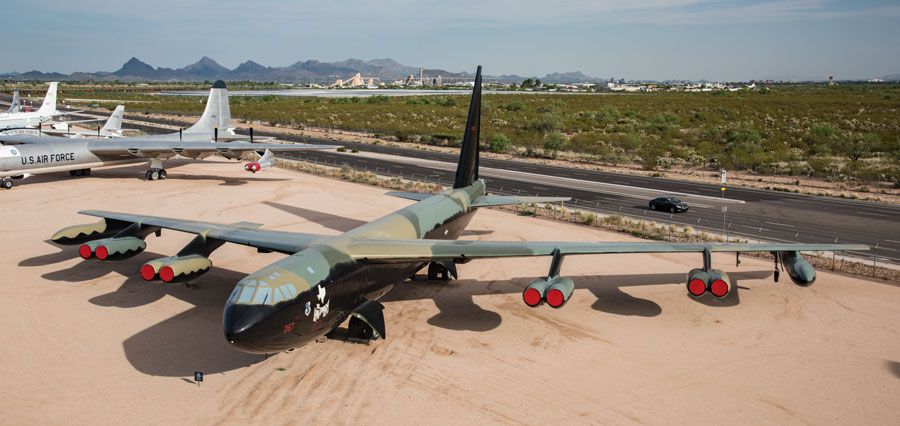Boeing B-52D
Boeing B-52D Stratofortress
Design work for what would become the B-52 Stratofortress began in 1945. After several major design changes, the first of the eight-engined bombers took to the air on October 2, 1952. The first of the eight major production variants of the B-52 were built in 1954, with production continuing through 1963. The fourth model of the B-52 built, the B-52D was the second most produced version of the Stratofortress. Delivery of the “D” models began in 1956 with a total of 170 built.
As they were first built, the “D” model was virtually identical to earlier models of the aircraft except that it lacked the reconnaissance ability of earlier B-52s and was intended purely as a bomber. In 1965, modification of B-52D aircraft began to increase their conventional bomb load. The “Big Belly” modifications resulted in the ability to carry a total 108 conventional bombs both internally and externally. This means that one aircraft could carry 54,000 pounds of bombs, roughly the equivalent of nine World War Two B-17s. B-52s dropped thousands of tons of bombs on targets in Vietnam, becoming the symbol of American strategic air power during that war.
| Wingspan | 185 ft |
Wingspan |
| Length | 156 ft |
Length |
| Height | 48 ft |
Height |
| Weight | 450,000 lbs (loaded) |
Weight |
| Max. Speed | 650 MPH |
Maximum Speed |
| Service Ceiling | 50,000 ft |
Service Ceiling |
| Range | 6,000 miles |
Range |
| Engines | Eight Pratt & Whitney J57-P-19W turbojets with 12,100 pounds of thrust each |
Engines |
| Crew | 6 |
Crew |
Manufacturer
Boeing
Markings
7th Bombardment Wing, Carswell AFB, Texas, 1981
Serial Number
55-0067
Designation
B-52D “Lone Star Lady”

